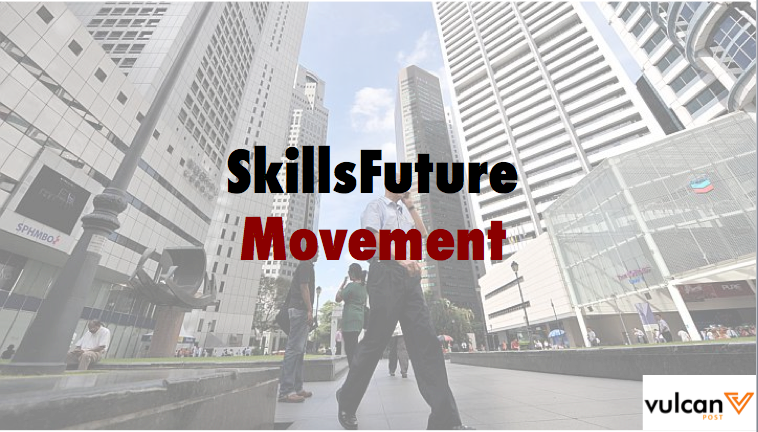By now, you’d have heard about the S$500 SkillsFuture Credit that all Singaporeans aged 25 and above will receive. You’ll also have received a handout in the mail, telling you exactly what you can spend those on. I know I did — I spent that very afternoon looking up every imaginable course from hydroponics to something titled “Better Grammar for Professional Business Communications”. After all, the credits are free, so I should spend all of it, right?
Before you dive head-first into the wonderful world that is free courses, you might be wondering what exactly SkillsFuture is about. Every politician seems to be talking about it – it was also given a few mentions during the recent Budget 2016 – and while you do know that it’s good for you, you’ve also heard terms like Mid-Career Enhanced Subsidy being thrown together in the same sentence. It’s confusing, annoying to Google, and maybe makes you want to give up on the S$500 altogether.
Image Credit: The Straits Times
But you really shouldn’t be worrying about anything apart from how to spend your SkillsFuture Credit, so to help you out, we asked the hard questions to clear up the confusion once and for all. You can thank us after you’ve gotten your shiny new set of skills.
SkillsFuture Credit vs SkillsFuture Movement
This is where most of the confusion lies. When we talk about the S$500, what we’re referring to is SkillsFuture Credit — a small part of the larger SkillsFuture Movement. The movement comprises a whole host of other initiatives, which support Singaporeans along each stage of their careers. This includes fresh job-seekers as well as mid-career individuals.
Fresh Job-Seekers
Image Credit: gov.sg’s YouTube channel
It’s hard securing a job when you’re just out of formal schooling. You don’t have any experience to speak of, don’t have any contacts to get referrals from, and you might not even know what industry you want to get into yet. This is where the Earn and Learn Programme comes in.
What this does is it allows ITE and Polytechnic graduates to get placements with companies relating to their course of study. You’ll then receive anywhere between 12 and 18 months of training, after which you can continue working with the organisation full-time. The best part? You get a S$5000 incentive if you sign on after your training ends.
Mid-Career Individuals
There’s a lot of talk these days about YOLO, travelling around the world and people leaving their jobs to pursue their passions. But not everyone has the resources — or is willing — to drop everything at a moment’s notice, especially if you’ve been developing your career for a long time.
Image Credit: Steven Lewis via Unsplash
Still, it’s only natural for everyone to feel stuck in a rut once in a while. And one way to get a new perspective on things without actually quitting your job is to take some time to evaluate what you truly want out of your work. Maybe you need an upgraded set of skills to net that promotion you’ve been hankering after; maybe it’s as simple as taking a brand new course in something you feel could add value to what you do.
And there are a lot of programs dedicated to meet this need. Here are some of them under the SkillsFuture Movement:
This programme is great for those already in sectors that are predicted to grow significantly in the coming years. It can be expensive to keep up with the developments in these industries, which is why employees under this scheme will be given cash awards of S$5,000 to cover those expenses.
You won’t even need to serve a bond, so you really get to have your cake and eat it too.
Image Credit: Annie Spratt via Unsplash
Even if you don’t fall under the key sectors marked out for rapid growth, you can still go ahead and refresh your skillset. Those above 40 years of age can receive up to 90% subsidies on WDA-supported courses, and if the course you’re interested in is subsidised by the MOE, the subsidies will rise beyond that.
Sectoral Manpower Plans (SMP)
What if you’re nowhere near 40 years old, you ask? Well, the SMPs mark out critical and essential skills for each industry in the coming years, so no matter what sector you’re in, you can get an idea of the kind of training you will need to stay relevant. With this information in mind, you can then sign up for the necessary courses (and make use of that S$500 credit!).
The name of this initiative doesn’t reveal much, but we did the work and as it turns out, P-Max is a scheme targeted at Professionals, Managers and Executives (PMEs) who are new to small and medium-sized enterprises (SMEs).
Image Credit: Bethany Legg via Unsplash
As part of efforts to support local SMEs, the SkillsFuture Movement is hoping to make it easier for SMEs to retain talent, and for PMEs to thrive in a new work environment. This comes in the form of job-matching help, heavily subsidised workshop training, and follow-up services. If all works out, SMEs will even receive a S$5,000 grant.
Now that you have a better idea of what the whole SkillsFuture Movement is about, you should be able to better divide up all that credit you have. Don’t give up on that S$500 just yet; nothing should get in the way of a true blue kiasu Singaporean and all that free stuff.
















